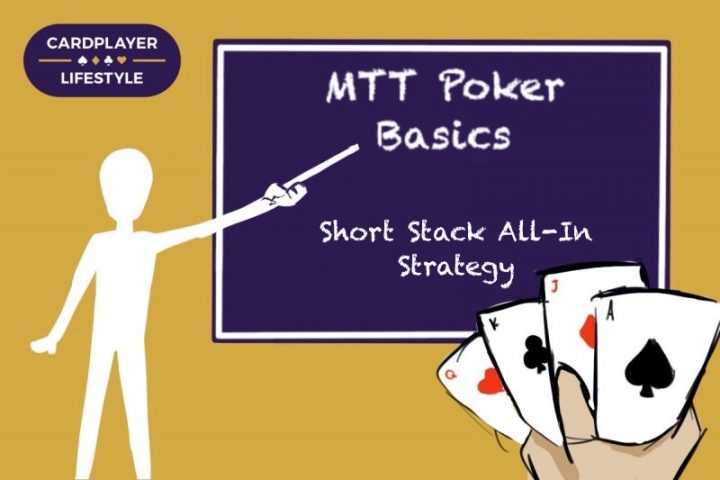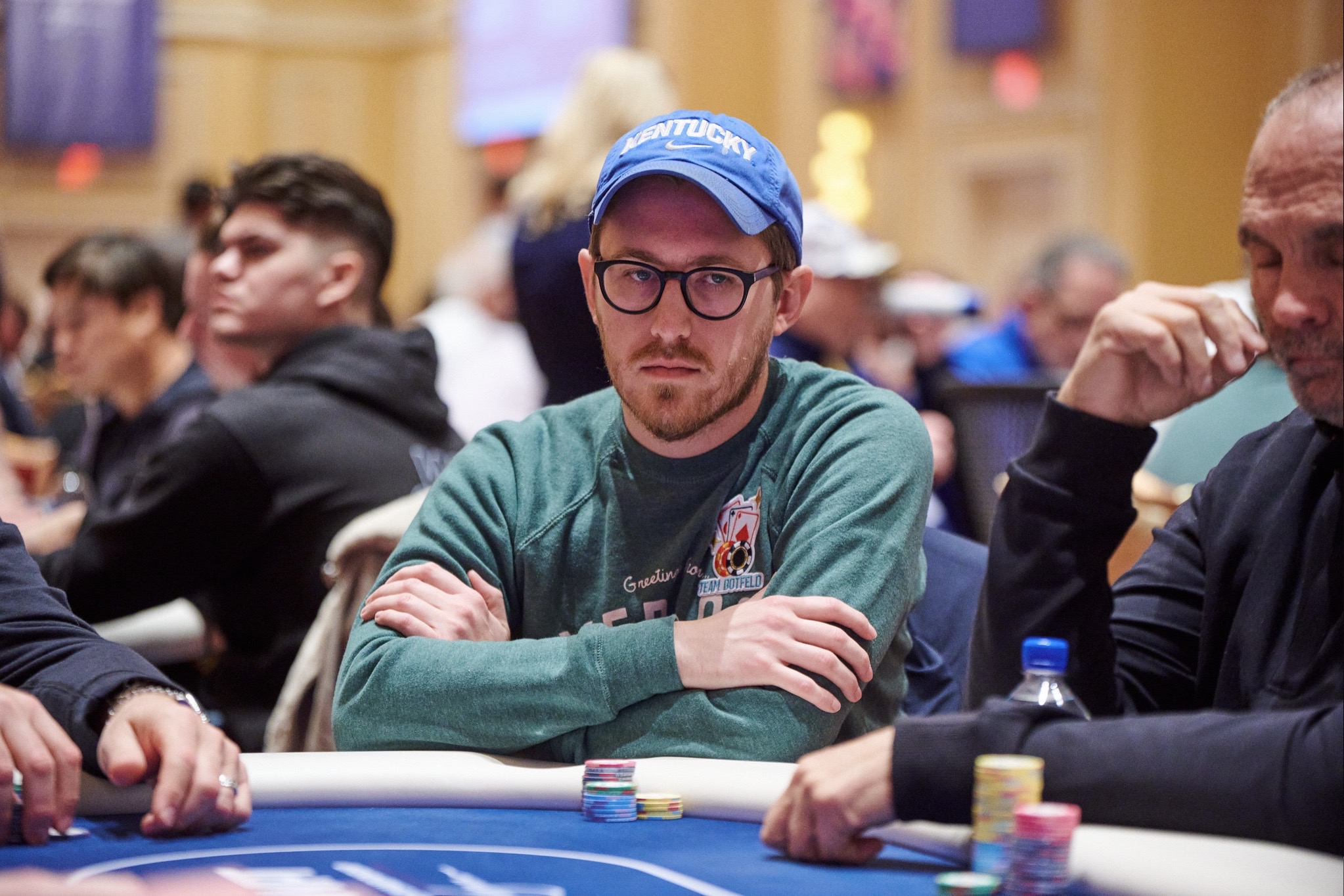Ed. note: This is the fifth in a series of articles designed to help recreational tournament poker players build their hobby into a profitable endeavor.
Tournament poker is inherently about risk. It is far different from cash games, where the average stack is much deeper and the threat of being all in preflop is quite rare. In a tournament, you don’t have the luxury to sit around and grind out the small pots with a short stack, especially as more pots are played multiway. As the blinds keep rising, you will need to be willing to be all in preflop more than you like. And often, you will need to be all in with hands that may feel uncomfortable.
That said, this doesn’t mean we start to shove anything just because we have a short stack. Quite the opposite. Gone are the days when being under 20 big blinds all but assured your tournament run was over. The key is understanding when and how to weaponize your short stack to stay alive.
As is so often the case in poker, it’s not about gambling, it’s about calculated risks. In this article, we’ll focus on how to spot these ideal situations for nursing your short stack back to health.

Shoving more than the best hands
Every time you go all in, your tournament life is at risk. That can be scary. But it’s necessary to give yourself a chance to spin your chips back up and make a deep run. Whether this is a micro buy-in online or a nosebleed stake for you, the ranges won’t change.
But in order to be shoving often enough, you are going to need to shove more than the top premium hands. Of course, you should be thrilled to see your solid pocket pairs, AK/AQs etc. But many other hands are going to perform well here, and the opportunity cost of passing on those situations will add up in the long run.
For example, let’s imagine you are sitting in the cutoff position with 17 big blinds. The hijack decides to min raise off an average stack just before you, and you look down at QJs. That’s a pretty hand! You can flop decent pairs, straight and flush draws. If it comes Q or J high, you will feel compelled to stack off and let the chips fall where they may. Time to flick in the call and see what the flop brings.
That seems to be the common thinking, but that philosophy fails to consider many key factors. Obviously, when you flat call, you will only have 15 big blinds behind in a pot that has grown to be at least 6.5 without further action. Sure, you may feel happy stacking off when you flop the top pair. But how do you feel when your pair is second or third on the board? Maybe there is even a flush draw that doesn’t connect with your suits. At roughly 2.5 SPR (stack to pot ratio) you will find flops that incentivize you to pile chips in, certainly. But with QJs, you have the perfect hand to take a different approach with preflop.
When we have 15-17 big blinds and are facing a later position open, we can profitably shove any suited Broadway hand. That includes all combinations JTs and up. Our best offsuit hands like KQo and ATo+ have no problem snapping the chips into the middle either. Going all in with attractive hands that aren’t quite lethal postflop is perfect for getting better hands to fold, collecting the pot with no questions asked.
Think about what the hijack opening range looks like and how they have to respond when we shove. They should be opening more than 25% of their hands from this position, and when we shove, they should be folding nearly 60% of the time. That includes hands like A8o, all of the unsuited Aces below ATs, even hands that dominate ours like KTs are better off waiting. And even when you get called by pocket pairs, you have two overs to the vast majority.
So yes, these suited Broadway hands may feel worth the gamble of flat calling if you hit the right flop. But realistically, you need to pick up chips and stay on offense. Getting your opponent to fold nearly 60% of their range is a massive win that can add a significant number of chips to your short stack without a showdown.
Appreciating fold equity
A common fear you hear from tournament players is that they are unwilling to be all in with a playable stack, say 20-30 big blinds. With this kind of stack, many players pass on profitable spots or make tighter folds. Yes, it is true that your buy in is lost once the chips are gone. But when you are this overly cautious, it’s only a matter of bleeding out slowly rather than a swift demise.
By the time you reach the 20-30 big blind stack depth, you will be jamming on opponents often with your best Broadway stuff, just like we did with QJs before with 17. At 30 big blinds effective, even a hand as strong as AKo won’t often bother 3-betting non-all in over middle position opens. It would much rather see all five cards and take advantage of fold equity.
Fold equity is great because with such a big shove, your opponents can start folding some of their best hands that they would snap off smaller shoves with. It’s a sliding scale that begins shoving Broadway hands that appreciate folds (think KJs, JTs, etc.) around 25-30 big blinds and expands to the full selection of Broadway options the shorter we get.
Here is a simple rule of thumb. When the middle to late positions open and you have a nice playable hand that could face uncomfortable action on lots of boards, it is usually safe to select this type of hand as a jam preflop at these stack sizes. Rather than gamble on finding a safe flop, you can appreciate the equity gained by getting folds.
Living and dying by the sword
Playing your short stack aggressively is a strategy that will work in the long run, certainly. But make no mistake, this is a brutal game. And when things don’t go your way, it can feel personal.
You can play the right all ins consistently and go on devastating runs without winning flips or holding vs worse hands. As most beginner poker bankrolls are fairly vulnerable, this can affect your confidence and decision making if you aren’t careful. Unfortunately, there is no advice for avoiding these downswings.
Tournament poker is not for the faint of heart. In order to make the best plays, it is important to understand why they are the best plays and stay committed to making them over the long run. Personally, knowing that I made a profitable decision helps me feel prepared for the worst to happen. If you want to play tournament poker consistently, these are the hard times you need to be comfortable with to get ahead. Living by the sword and dying by the sword will be essential when going to war on the felt.
For more on building up thick skin through downswings, I would recommend picking up a classic poker book: The Mental Game of Poker. This book by Jared Tendler and Barry Carter was the first I ever read on poker, and it’s been nearly as valuable as any since. This whole series is centered on strong poker mechanics, but you should never sleep on the importance of having your mind right first.
Taking calculated risks
No-limit hold ‘em has become the Cadillac of poker in recent decades, and the inherent threat of facing decisions for all of your chips is what makes the game different than any other.
In tournaments, this aspect is heightened far more than any other discipline of no-limit. In the late 2000s, it became apparent that aggression worked. People were too tight and those willing to constantly put others to the test would print money. As strategy has developed, this blind aggression is far from optimal in today’s far less exploitable games.
However, the game still centers on this inherent threat. When the risks you take are more calculated, deployed at opportune times, you’ll find yourself growing your stack consistently. Combine these new concepts with the classic player read exploits, and you will be a force to be reckoned with deep in tournaments.






